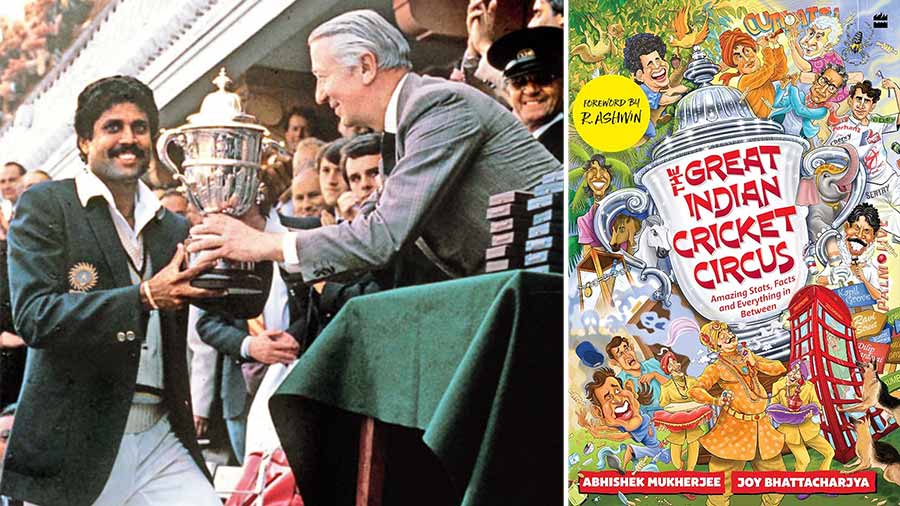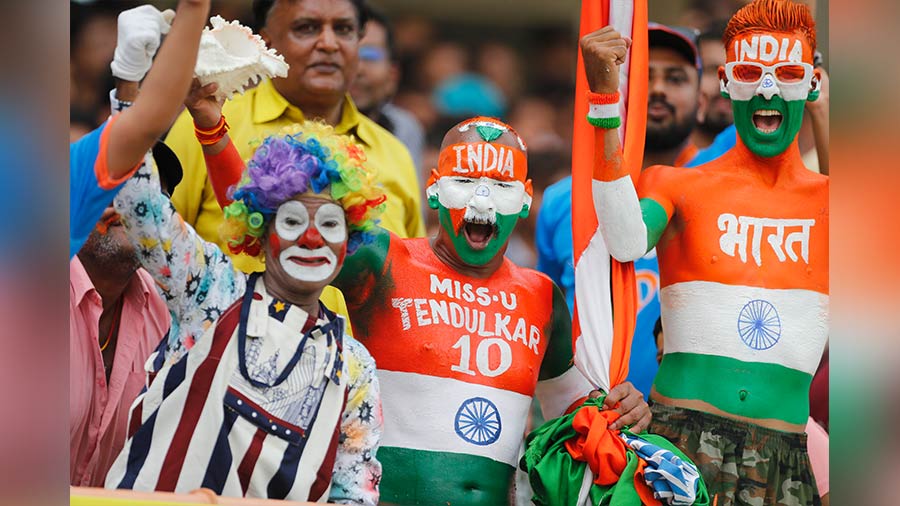How did Charles Dickens shape the history of cricket? Which Indian cricketing icon was switched at birth and could have grown up to become a fisherman instead? Why exactly was the IPL created? All these and many more cricketing trivia make The Great Indian Cricket Circus (published by HarperCollins), co-authored by Joy Bhattacharjya and Abhishek Mukherjee, a must-read for all cricket fans.
Released just before the World Cup season got underway in India, this is a book that goes beyond facts and stats to tell hundreds of intriguing cricketing tales, many of which seem too outlandish to be true. Speaking about their experience of writing the book as well their favourite stories from it, Joy Bhattacharjya and Abhishek Mukherjee joined My Kolkata on video call, with Bhattacharjya leaving just in time to make it to his on-air segment for Cricbuzz! Edited excerpts from the conversation follow.
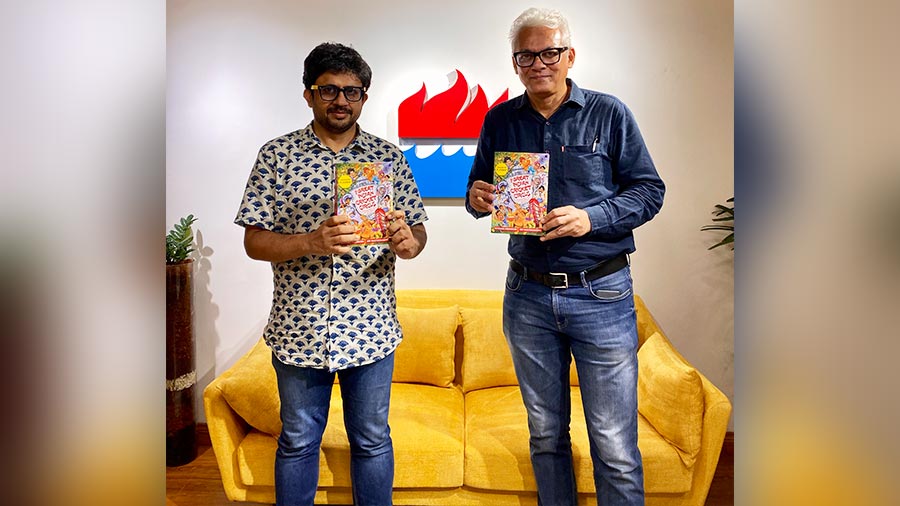
Abhishek Mukherjee (left) and Joy Bhattacharjya with their book at the HarperCollins India office HarperCollins India/Twitter
My Kolkata: How did the two of you decide to write this book? How much time did it take and what was the process like?
Joy Bhattacharjya (JB): A friend of mine at HarperCollins asked me what book I’d like to do if I could write any book in the world. I said a cricket book that’s packed with stories, trivia and a lot of fun. She agreed and the next day I got confirmation on my email. Then I asked myself who’s the one person I know who can really make this book work. That’s when I thought of Abhishek and his encyclopaedic knowledge about cricket. I reached out to him and told him that he has to do this book with me. He said yes, and the rest is history.
In terms of time, it took us a little more than a year. We started by putting down a lot of lists related to cricket. New lists emerged from our original lists. From all those lists, we got our topics. Once the topics were in place, the next question was how many. Once we reached about 50 to 60 lists and the topics from them had been chosen, Abhishek just took over. He added a lot of things afterwards and the book owes a lot to his drive.
Abhishek Mukherjee (AM): A lot of entries in the book also came during the process of writing. So, in a way, we were researching even as we were writing. Both of us are regular quizzers and once you start reading this book, you’ll be able to sense that this book has been written by quizzers!
‘Both Swami Vivekananda and Mohammed Shami have played for Town Club in Kolkata; the IPL was a response to the ICL’

Swami Vivekananda and Mohammed Shami played for the same club as youngsters TT Archives
What are your favourite stories from the book?
JB: I love the chapter on “Butterfly Effects” and how seemingly inconsequential things can make such a difference. Such as Keki Tarapore (former Indian cricketer and administrator) telling a young Kapil Dev that “India hasn’t produced a single fast bowler… [You want to be a] fast bowler… that’s the best joke I’ve heard in years”. How both Swami Vivekananda and Mohammed Shami have played for Town Club in Kolkata. How women’s cricket came to be in India. How in the days of the Bombay Pentangular (between 1892 and 1946), nobody cared about the players’ religion as long as they played well. How Maharajas in India were the original ‘IPL owners’, with private cricket teams belonging to them. It’s stunning how so many of these stories aren’t well known. And even more than that, it’s remarkable how cricket has seeped into any and every aspect of Indian culture and Indianness.
AM: On the IPL, there’s this myth that the IPL was a product of India’s win at the ICC World T20 in 2007. As we explain in our chapter, “Did that Really Happen?”, the IPL was officially announced on September 13, 2007, the same day that India played their first match of the World T20 against Scotland in South Africa. The IPL was a response to the Indian Cricket League (funded by Zee Entertainment Enterprises) that started in 2007. Earlier, in the late ’90s, Lalit Modi had proposed a 50-over version of the IPL, which was rejected by the BCCI. Initially, Indian cricket hadn’t taken T20 seriously. As we know, several senior players like Sachin Tendulkar, Rahul Dravid and Sourav Ganguly didn’t travel to South Africa to play in the World T20. In fact, India may have skipped the tournament altogether had it not meant endangering their hosting rights for the 50-over World Cup in 2011.
Another myth that you bust in the book is that women’s cricket in India has only become popular in recent years. How far back does fandom for women’s cricket in the country go?
AM: Back in 1974/75, the Senior National Women’s Cricket Championship was played before packed houses in Kolkata, including the Eden Gardens. Later that season, the Australia Under-25 team arrived in India for a full tour. Around 25,000 people watched their game against India in Bengaluru. Another 20,000 witnessed the action in Jalandhar. During the match at Eden, a lady gave birth in the crowd! A gentleman from the audience rushed onto the Eden pitch to congratulate an Australian batter on reaching her century. That’s the same story that Cadbury would recreate for an advertisement in 2021.
The backstory of Pakistan’s first great fast bowler
One of the many fascinating stories in your book is that of a fast bowler named Fazal Mahmood. Tell us about that.
AM: This is a story you’ll find in the “Butterfly Effects” chapter. Mahmood was picked to play for India for the tour of Australia in 1947-48, the first cricketing tour by an Independent India. Mahmood was part of a camp before that tour, organised in Pune. From there, Mahmood travelled with the rest of the team to Mumbai by train. During that journey, a mob attacked the train with the intention of lynching India’s Muslim cricketers. C.K. Nayudu, then 51, stood between Mahmood and the rioters with a bat. Mahmood reached Mumbai safely but then abandoned his original itinerary and went straight to Karachi. That’s when he made up his mind that he’ll never play for India again. As a result, India didn’t have a truly world-class fast bowler until Kapil Dev. On the other hand, Mahmood became Pakistan’s first great fast bowler and inspired a generation of Pakistani pacers.
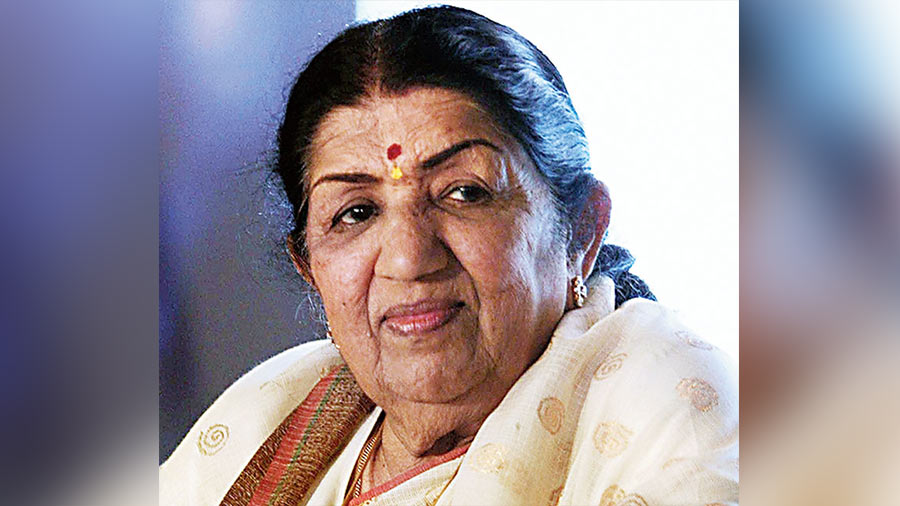
Lata Mangeshkar got the BCCI out of a tricky spot in 1983 TT Archives
In your chapter called “SOS: Famous call-ups in Indian cricket”, you mention that the BCCI had announced a bonus of Rs 1 lakh for each member of the squad after India won the 1983 World Cup. But the BCCI did not have the funds to reward the players as promised. Then, something happened. Can you take us through that?
AM: The BCCI reached out to many people to do a concert to raise funds. Eventually, one of them, who also happened to be an avid cricket fan, agreed. She was Lata Mangeshkar, who performed for two hours at Delhi’s Jawaharlal Nehru Stadium. The BCCI reached its financial target and rewarded Mangeshkar with two VIP passes for every international match played by India on home soil.
‘During the ’90s, the Indian economy and Indian cricket grew hand in hand’
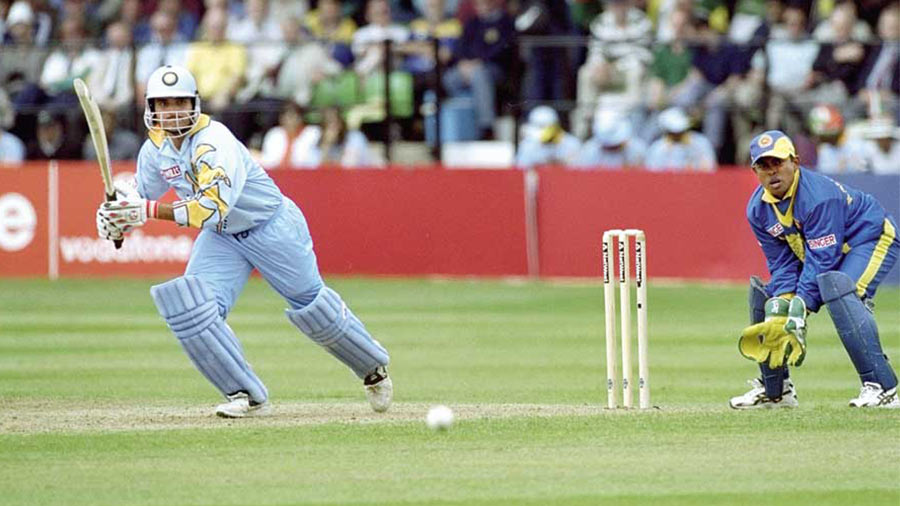
Cricket captured the public imagination in India like never before during the 1990s TT Archives
What do you regard as the biggest turning point in Indian cricket? Was it winning the 1983 World Cup final at Lord’s? Was it the early 1990s when money started entering Indian cricket through broadcast deals? Or was it something else?
AM: The ’83 final was the biggest turning point, but for a different reason. Ahead of the final at Lord’s, N.K.P. Salve, then BCCI president, wanted some extra passes. But the Marylebone Cricket Club (MCC) denied him the passes. Salve, whose pride was wounded, vowed to bring the World Cup to India. He teamed up with Pakistan and Sri Lanka and within four years they did just that. Nine years later, when Jagmohan Dalmiya had entered the fray, India, Pakistan and Sri Lanka joined hands again and with the vote of South Africa, hosted the World Cup once more. Between those nine years, a lot of things happened. For starters, England and Australia lost their veto rights at the ICC. The 1996 World Cup was also important because of the amount of money the TV rights were sold for to Worldtel. It was unheard of back then. It established India as a powerhouse at a time when cable TV was on the rise. In tandem with the liberalisation policies in the early ’90s, the Indian economy and Indian cricket grew hand in hand. More day-night matches were organised to cater to the Indian audience, for whom Doordarshan had become the default family entertainer. All this ensured that by the turn of the millennium, India had become the financial centre of cricket.
‘Tendulkar broke the income barrier and helped professionalise Indian cricket’

Sachin Tendulkar helped make cricket a sustainable career option for Indians TT Archives
If you have to identify three of the most important personalities who have made Indian cricket the force it is today, both on and off the field, who would they be?
JB: Kapil Dev, Jagmohan Dalmiya and Lalit Modi.
AM: Jagmohan Dalmiya and Lalit Modi for me, too. On the field, it’s really hard. C.K. Nayudu could be one, but I’d go with Tendulkar. Not because of his records, since Sunil Gavaskar and Kapil Dev also had a lot of records to their name. But because Tendulkar was the one who broke an income barrier for Indian cricketers. To the extent that an Indian cricketer today can have a stable life even if they don’t play for India or have an IPL contract. By hiring Mark Mascarenhas [as agent-cum-manager], Tendulkar also helped professionalise Indian cricket. Even the likes of Gavaskar had to fill up time sheets to get their pay. Nobody can imagine that today. And a large part of that is the legacy of Tendulkar.
Lastly, your predictions for the ongoing ICC Men’s Cricket World Cup.
JB: India are the favourites, but Australia will find a way to be there towards the end. South Africa are a top four team and the final place should be New Zealand.
AM: India, Australia and New Zealand in the semis. For the fourth team, I’d really want a second team from the sub-continent. Over the last two World Cups, India has been the only Asian team in the final four. I’d like that to change this year. As for the final, I’d go with India versus Australia.
